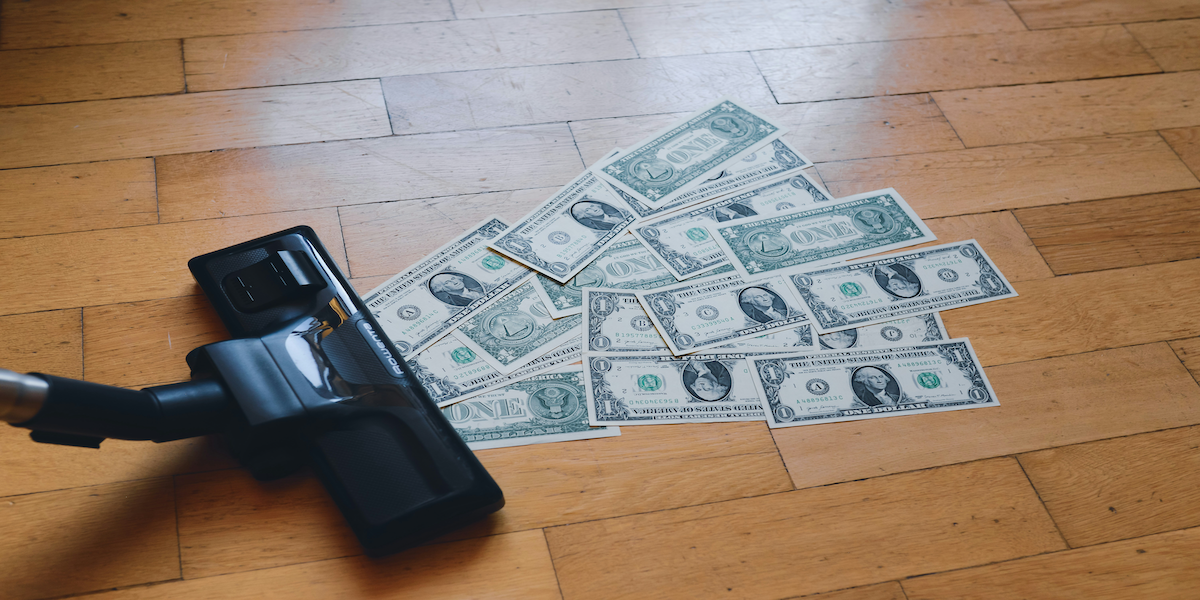How Does Inflation Affect Small Businesses?
Image commercially licensed from Unsplash
While inflation may be affecting us all right now, no one is feeling the impact quite as much as small business owners. As many as 85% of small business owners are concerned about inflation, and with good reason, as inflation poses significant challenges. Not only is inflation reducing customer purchasing power, but rising costs of raw materials and labor are increasing operating costs and squeezing profit margins.
Small business owners are having to find ways to absorb these rising costs or face passing them on to their customers. Inflation can be a constant challenge to small businesses. To mitigate its impact, small business owners must prepare by understanding how inflation affects their businesses and identifying effective strategies to manage it.
What is inflation?
Inflation is the continuous increase in the prices of goods and services over a period of time. While economic factors mean it’s a feature of daily life, inflation is considered a negative. It occurs due to the rising cost of products and services and can lead to consumers buying less. Rising prices can result from increased production costs, changes in demand and supply, government policies, and excessive money supply. It impacts the economy, consumers, and businesses by contracting purchasing power, eroding the value of savings, and reducing confidence in investment decisions and business operations.
How inflation affects small businesses
The US economy experienced record inflation levels during 2022, with the consumer price index (CPI) up by 8.3%. This inflationary pressure affects small businesses in several key ways.
Higher costs of goods and services
During inflation, costs typically increase for all kinds of necessities, from labor and raw materials to utilities. As this can seriously squeeze profit margins, small businesses may struggle to absorb these increased costs and may have to pass them on to the customer.
Reduced consumer sales and spending
With higher costs of goods and services, consumers typically have less disposable income for purchasing non-essential items, leading to reduced sales. This can mean small businesses struggle to maintain profitability and compete against larger businesses that can absorb the effects of inflation more efficiently.
Increased prices
Inflation makes running a business more expensive, forcing businesses to increase their prices to mitigate the effects. Around seven in 10 small business owners have had to raise prices to cope with the impact of inflation. This can reduce the business’s competitiveness as customers may want to avoid paying these higher prices. Inflation also makes it more challenging to determine the optimal prices for goods and services if prices are rising rapidly.
Planning and budgeting uncertainty
Inflation can create uncertainty within the economy, industry, and business environment. It can make it significantly more challenging to plan for the future. The rapid changes in costs and pricing can make it much harder for small businesses to budget, determine operating expenses, manage cash flow, and make accurate financial projections.
Borrowing and financing
Inflation can cause interest rates to rise, making it more expensive for small businesses to get credit. This could prevent some small businesses from being able to access the affordable financing options they need to grow and expand. However, inflation can sometimes work to business owners’ advantage when they have older debt. Those with fixed-rate credit lines can make repayments based on their old rates, making the debt cheaper than new funding.
“A credit card with cashback rewards tailored to the needs of the business can help offset increasing costs. It also allows for better expense tracking and financial planning, helping small businesses navigate the challenges posed by inflation.”
David Luck, Founder and CEO of Capital on Tap
Not all small businesses will feel the impact of inflation as sharply as others. Small businesses that are focused on non-essential items are likely to face greater effects as consumers concentrate more of their spending on essential goods and services.
How can small businesses cope with inflation?
Inflation presents a number of crucial challenges for small businesses. As their costs rise, small business owners must consider ways to adapt and navigate these complex economic conditions to maintain profitability.
Cost management
Small businesses should look for ways to keep expenses low by cutting back on non-essential costs and reducing production costs. This could mean negotiating better deals with suppliers, reducing wastage, and optimizing operational efficiency.
Diversify suppliers
A small business relying on just one supplier can make the business significantly more vulnerable to price fluctuations. Changing or expanding suppliers can provide more flexibility and options to negotiate better prices.
Pricing strategies
A common tactic small businesses use to mitigate the rising cost of inflation is to adjust their pricing strategies by gradually increasing prices to maintain profit margins. However, before doing so, it’s important to consider current market conditions and competitors’ pricing to ensure the business can effectively balance profitability and competitiveness.
Consider available financing
A small business credit card can help manage short-term small business cash flow and finance needs during periods of high inflation. Many of these cards offer rewards, flexible payment terms, and expense tracking to help small businesses bridge gaps in cash flow and manage expenses.
Monitor consumer demand
Monitoring the market and changes in consumer behavior and demand can be invaluable. It enables small business owners to adapt their offerings to align with consumer preferences and adjust marketing strategies to maintain or increase sales.
Impact of inflation on small businesses: Summing up
Inflation poses significant challenges for small business owners, from contracting profitability and purchasing power to affecting operational decisions and forecasting. Rising costs combined with planning uncertainties and reduced market demand make it essential to introduce effective strategies such as cost management, adjusting prices, and exploring available financing to successfully navigate the challenges of inflation.





